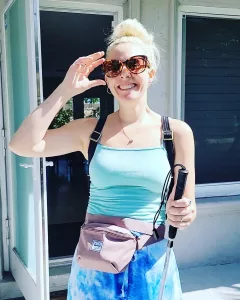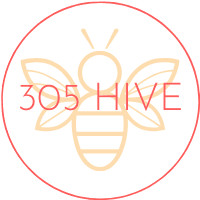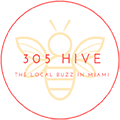My name is Monica Pruitt, and I found out I’m going blind this year at age 29.
Imagine the irony in driving to the ophthalmologist to get an updated contacts prescription, and after spending 4 hours getting every eye exam the office had, being told you’re legally blind and not allowed to drive anymore.
“But I DROVE here!”
That appointment changed everything. I saw a retinal specialist a few days later because maybe the first doctor was somehow wrong about me. No one can see in the dark… right? Everyone has to walk staring at their feet so they don’t trip… right? Anxiety with driving is normal because everyone has to constantly scan and look around because it’s like they have tunnel vision… right? Wrong. I had grown so accustomed to my defective vision that I didn’t realize how much I really couldn’t see.
Retinitis Pigmentosa, cataracts, retinal tear, night blindness, light sensitivity, tunnel vision, astigmatism, myopia; such a long list of reasons why my eyes no longer worked well. In the United States legally blind is defined as visual acuity 20/200 or less in your better eye or unable to be corrected or field of vision 20° or less. With glasses, my 20/800 acuity is able to be corrected, but my 15° peripheral vision defines me as legally blind. Retinitis Pigmentosa is a genetic condition that is characterized by damage to the photoreceptor cells in the retina leading to night blindness; tunnel vision; and for some, it can lead to complete blindness. It is a degenerative condition with no current treatment or cure.
After being confirmed by two separate medical professionals that I had Retinitis Pigmentosa, it was advised I get genetic testing because since I also am hard of hearing, it was very likely I have Usher Syndrome. Usher Syndrome has three subtypes: each one characterized by varying degrees of severity of vision loss, hearing loss, and balance disorder.
While waiting months for the genetic results to come back, I went ahead and got set up with division of blind services and started attending classes at the Miami Lighthouse School for the Blind. I’ve been incredibly grateful for these programs because with classes like Orientation & Mobility; Home & Personal Management; Braille; and Technology classes I am able to learn how to maintain my independence as a blind person.
Eventually, the genetic results came back and confirmed I have Retinitis Pigmentosa due to Usher syndrome type 2A. Since my vision loss is progressing quickly and my moderate-severe hearing loss is relatively stable with hearing aids, I have been immersing myself in the blind/low vision community.
Learning to use a white cane has been one of the hardest things in my journey. It is firstly challenging because it requires a lot more coordination than I anticipated. Secondly, using the white cane in public, while it’s extremely helpful, makes me feel self-conscious of how others may perceive me. At the Lighthouse, they can teach me how to use the cane, but I am responsible for using it despite any self-esteem qualms.
White Cane Day is celebrated on October 15th; the Lighthouse is hosting an event that day, and I could not be more excited to proudly walk the neighborhood with my white cane. The more people are aware of vision conditions and those who use a white cane, the easier it becomes for people like me.



